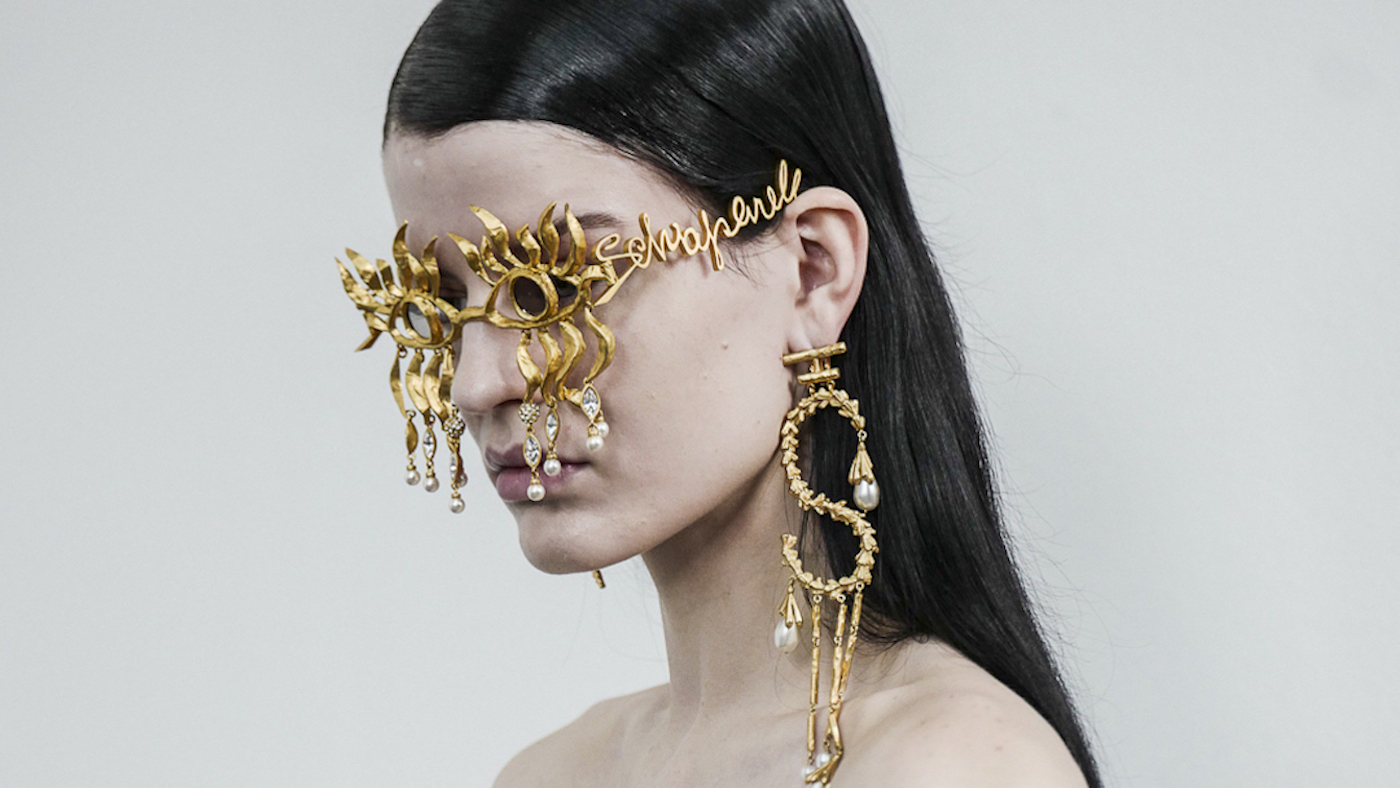Daniel Roseberry remembers his first Schiaparelli show
American designer recalls a career-changing moment in Paris

“This photo was taken minutes after my first show,” says Daniel Roseberry. “It’s me, reconnecting with my parents.”
On the phone from Paris, the Texas-born designer is detailing a snapshot (below) which was taken in July last year. It was then, during Paris’ bi-annual schedule of Haute Couture presentations, that Roseberry unveiled his debut collection for the storied house of Schiaparelli. Shortly before the photographer’s shutter clicked, Roseberry had made history, as the first American to lead a French haute couture make.
“It was just this quiet moment of connecting past, present and future, all happening at the same time,” he remembers today. “There was something beautiful about me being able to in a moment find reconciliation between the world that I am coming from and the world that I was marching into.”
The Week
Escape your echo chamber. Get the facts behind the news, plus analysis from multiple perspectives.

Sign up for The Week's Free Newsletters
From our morning news briefing to a weekly Good News Newsletter, get the best of The Week delivered directly to your inbox.
From our morning news briefing to a weekly Good News Newsletter, get the best of The Week delivered directly to your inbox.
Roseberry, who was raised near Dallas and trained at New York’s Fashion Institute of Technology, was announced as Schiaparelli’s artistic director in April 2019. To the designer, the high-profile appointment bookended a period of creative stocktaking: shortly before, Roseberry had left his role with Thom Browne, ending an 11-year tenure with the Manhattan-headquartered label. Instead of sketching, draping and perfecting designs at Thom Browne’s ateliers, Roseberry now considered his next steps, letting his imagination flow free at a small Chinatown studio, which he had rented. This he interspersed with trips back to Texas, helping his parents move from the Roseberry family home to new lodgings in a Dallas high-rise.
“During that time, I went shopping with my mum for a few days and we redid her entire wardrobe,” he tells me. “It was a really cool, special time for me and my mum. I had nothing going on and nowhere to put my vision or my creative energy.”
Then came the call from maison Schiaparelli. Within two weeks, Roseberry had upped and crossed the Atlantic to start work in Paris. Behind the neoclassical, sandstone-clad façade of 21, Place Vendôme – the brand’s home since 1935 – the designer and his team got to work.
After just 63 days, their combined efforts were presented in a show at the Pavillon Cambon Capucines, a cavernous venue on nearby rue Cambon. The designer’s parents had flown to Paris to witness the event first-hand. “My mum has been to like every women’s show that I have ever done,” he says. It was his mother who supported and nurtured Roseberry’s artistic talents early on. “She was such a prominent figure in my mind growing up and aside from Disney characters like Pocahontas and Belle, it was really my mum and Audrey Hepburn who were my earliest inspirations.”
A free daily email with the biggest news stories of the day – and the best features from TheWeek.com
Aside Schiaparelli’s surrealist legacy – during her lifetime, Elsa Schiaparelli pioneered many artistic collaborations, partnering with the likes of Jean Cocteau, Meret Oppenheim, Jean-Michel Franck and Salvador Dalí, who among other creations drew a red lobster onto folds of silk chiffon – Roseberry also ponders the Roman couturière’s life story. “I think at Schiaparelli, the question of exploring one’s own identity and this idea of contradiction is something that I have been inspired by as I learned about her life,” he says of the business’ globetrotting founder, who famously started out with a line of sweaters. “How she was an outsider in fashion when she started and this kind of like misplaced person coming from a different part of the world.”
In set, soundtrack and staging, Roseberry’s launch collection contextualised his own trajectory. Upending traditions, the show started with the designer appearing centre stage, his position sat at an artist’s draft table. Scored to a soundtrack of Manhattan subway trains and evergreens including Aretha Franklin’s 1985 hit Freeway of Love, Roseberry put pen to sketchbook. As models dressed in his first Schiaparelli designs appeared, Roseberry’s take on the house’s decades-strong heritage became clear: eschewing nostalgia for modernity, the designer stays clear from too direct a take on the brand’s archive, preferring instead to put his own spin on signature house concepts and details.
Schiaparelli’s own embrace of animal motifs gave shape to a dramatic snake necklace; acrylic fingernails used in precious hand-embroideries in turn nodded to the Surrealists’ notions of displacement and free association. The counterweight to a group of tailored outfits, the show’s brightly coloured finale dresses were cloud-like in construction. For this autumn’s ready-to-wear collection, he ennobled sombre black tailoring with golden chain-detailing.
Several months on from his first Schiaparelli success, Roseberry contemplates his choice of snapshot for this page. “The other thing I like about this image is that, I think specifically, fashion is an industry made up of misfits,” he says. “So many of us were either outsiders or losers in school. Random art kids. Drifters, you know? I love that this industry can be like a little bit of – and sometimes it’s better than other times in the way we treat each other –a refuge that people come to and build a new identity. In your twenties, there is so much running away, there is so much shoving things off . So far, my thirties have been more about, ‘OK, let’s stop running and see what are the things you have been raised with that you do want to inform who you are, and how you live’.”


